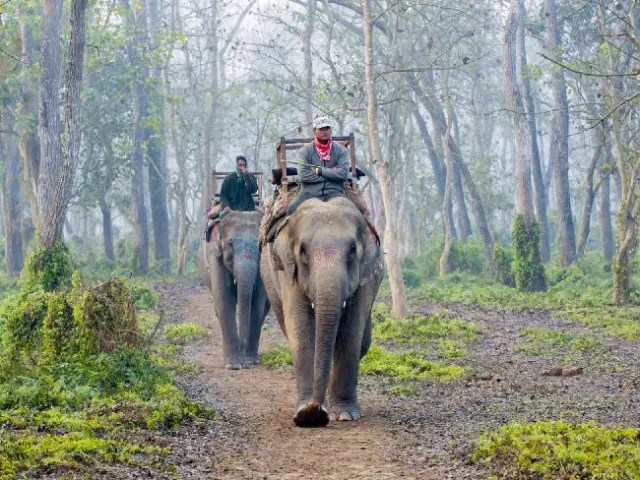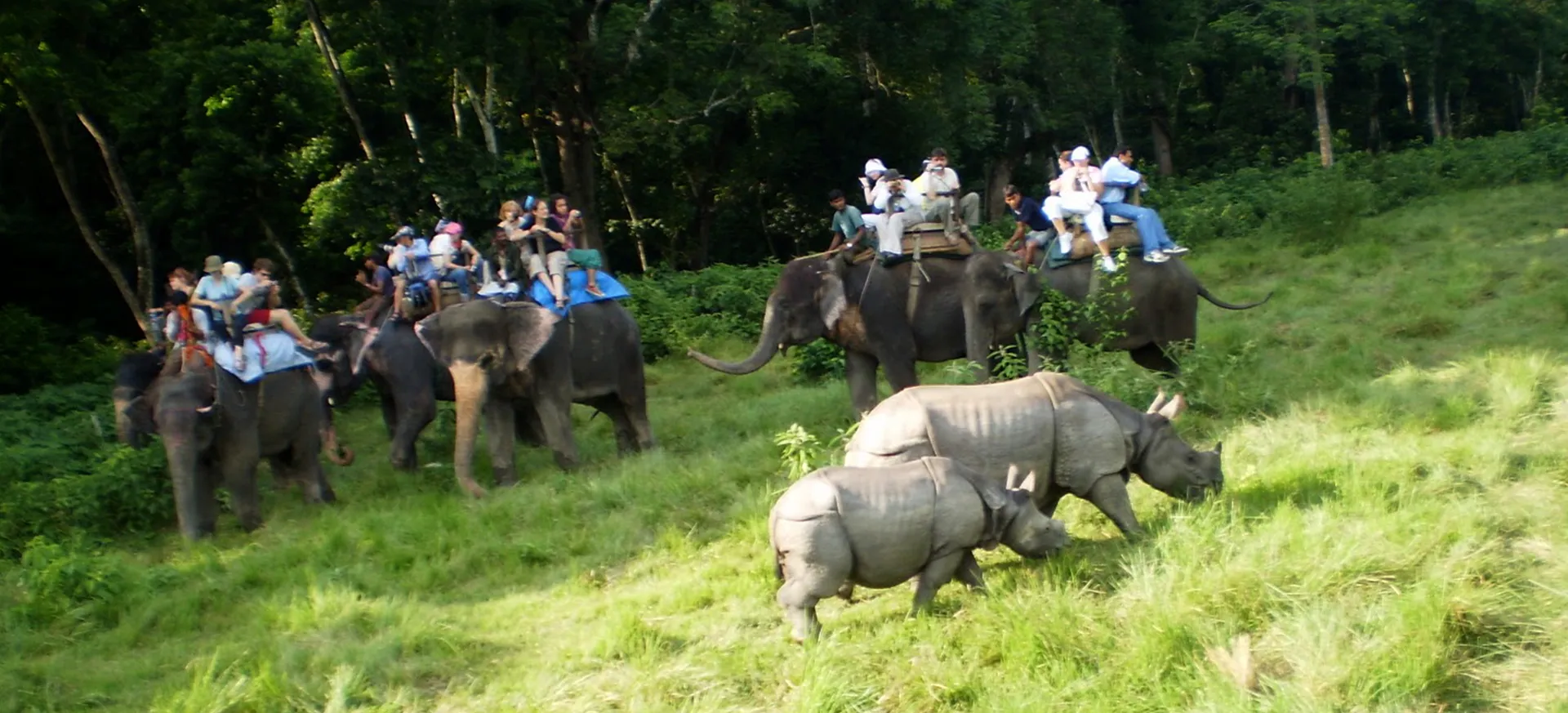Nepal’s jungle safari tours are almost as famous as its trekking tours and deservedly so. There are nine National Parks, three Wildlife Reserves, and three Conservation Areas to choose from. Five parks, in the lowland terai region, and one just north of Kathmandu are easily accessible by overland. The others are in trekking areas.
The terai is a belt of land that stretches from the Gangetic plain in India to the foot of the Himalayan Middle Hills: a land seared by heat in summer and drenched by monsoon rains for 14-15 weeks from late June to September. Formerly it comprised thick jungle from the Bay of Bengal to Kashmir. Today most has been felled for farmland: rice paddies where irrigation is possible, elsewhere hardier crops in poor soils and harsh conditions.
Three parks and three reserves offer exciting safari holidays: from west to east, the Sukla Phanta Wild life Reserve, Bardia National Park, Chitwan National Park linked to the Parsa Wildlife Reserve, and the Koshi Tappu Wildlife Reserve. These regions have largely retained their natural environments. Buffer zones around the parks are assisting further protection. They each contain a mixture of subtropical broadleaf and riverine forests, tropical wetlands and open grasslands. Large numbers of game, small and large and hundreds of species of birds are to be found.
The Shivapuri National Park, north of Kathmandu has moderate temperatures. Its forested hills are home to a wide variety of animals, birds and herbal plants. This is a popular region for walking and cycling safaris; with excellent Himalayan views from high ridges. It has subtropical broadleaf forests including alder, cherry, oak and rhododendron species. Animals include Indian leopard, jungle cat, civet, black bear, goral, barking deer, monkeys and over 300 bird species.
Accommodation in the parks or surrounding is steadily increasing. Roads are variable and access may depend on weather conditions. Some parks offer elephant safaris.
Chitwan National Park, adjoining the Parsa Wildlife Reserve, is just 4-5 hours drive from either Kathmandu or Pokhara. Together they occupy 3549km2/1370mi2 and wereproclaimed a World Heritage Site in 1983. Sub tropical broadleaf forests (mainly Sal trees) cover 70% of the site with chir pine on southern slopes and flowering tree and shrub species including rosewood, axlewood and bauhinia on southern slopes. Riverine forests include kapok, rhino apple and gooseberry. Savannah and grassland cover 20% with more than 50 species of grass including the tallest, elephant grass, cane and reeds.
There are forty three mammal species including one-horn rhino, Bengal tigers, leopards, sloth bears golden jackals, four-horned antelope and numerous smaller creatures, mugger crocodiles, Indian elephants and more than 500 bird species.
Sukla Phanta Wildlife Reserve in the west of Nepal has the largest continuous grassland as well as tropical wetlands and sal forest. It is home to the last strongholds of the endangered swamp deer, has 700 floral species and borders the Indian Tiger Reserve.
Koshi Tappu Wildlife Reserve in eastern Nepal lies in the floodplain of the Sapta Kosi River with deciduous riverine forest, grasslands and marshy vegetation that is home to Asian elephant, spotted deer, hog deer and Nepal’s last population of Arna wild Asian water buffalo and 485 bird species.
0
Related Trips





